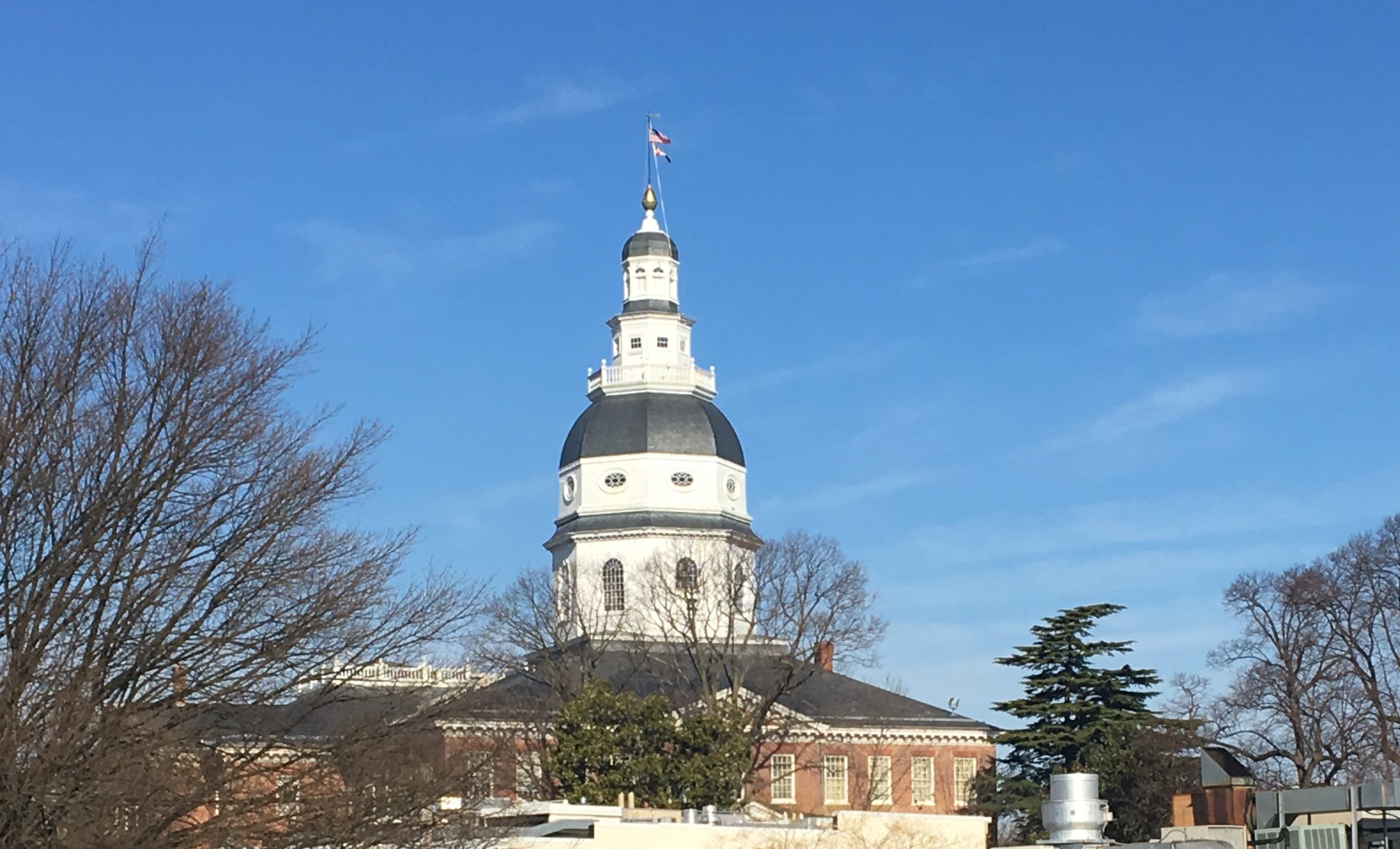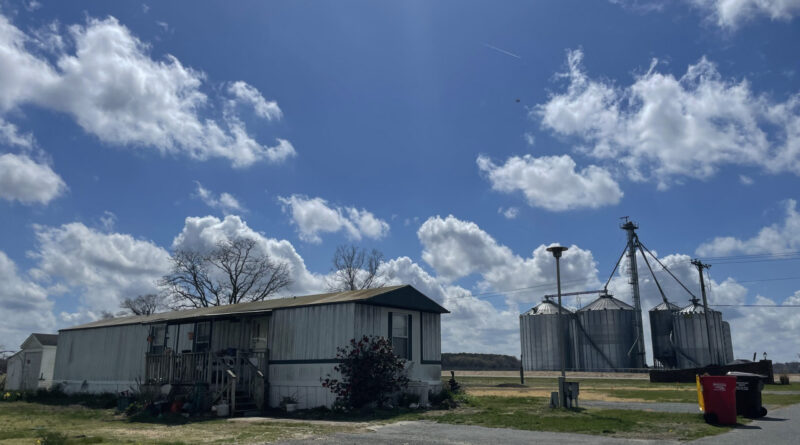Fearing ICE raids, Delmarva immigrants mostly stay home
By PAUL KIEFER
GEORGETOWN, Delaware – Race Street, usually the busy commercial core of a Central American neighborhood, was deserted on a clear weekday evening.
A man named Delmar sat in an otherwise empty restaurant, sipping a hot drink from a styrofoam cup. Unlike many of his neighbors, he told a visitor, he’s not reacting prematurely to the possibility of immigration raids.
He’s remaining hopeful, he said, but he’s also prepared.
“El plan A es esperarse,” he said. “El plan B es prepararse.”
Delmar said that the region’s key industries should see the empty businesses on Race Street as a sign of oncoming trouble. Without undocumented immigrants like him, the Delmarva Peninsula’s construction, agriculture, and hospitality employers could face a critical labor shortage.
“What’s going to happen to the workforce?” he asked in Spanish. “They need the value that immigrants provide.”
Not all immigrants in Georgetown without legal status are as relaxed as Delmar.
As concerns of pending raids circulate through rural communities on the Delmarva Peninsula, places like Race Street have grown eerily quiet. The mere possibility that the Trump administration might follow through on its mass deportation plans is enough to have a chilling effect in rural towns where many immigrants feel especially visible.
Capital News Service is not using the last names of undocumented immigrants or those in the asylum process at their request, to protect their identities.
Drawn initially by the region’s poultry industry and other agricultural work, thousands of immigrants from Latin America and the Caribbean settled in small towns and cities on the peninsula over the past five decades.
The peninsula remains a destination for new migrants. Since 2020, Wicomico County has received more new immigrants with cases in federal immigration court – including asylum seekers – per capita than any other county in Maryland, according to an immigration court case database maintained by the Department of Justice.
The same data indicates that both Wicomico County and Accomack County on Virginia’s eastern shore received more post-2020 immigrants per capita than Los Angeles County.
Children and grandchildren of those immigrants now make up a large share of the student body at North Georgetown Elementary, which serves children from the neighborhood surrounding Race Street.
Jennifer Nein, a multi-language learning coordinator at the school, said her students are on edge.
“I’ve noticed a few kids who are a little bit quieter than they normally are,” she said. “When I say, ‘Are you alright,’ they come right out and tell you, ‘I’m just really scared. I’m scared that I’m going to go home and my parents are going to be gone.’”
Another student recounted panicking at the sound of someone knocking on the door of their home, Nein said, only to discover that the visitor was a family member.
Nein noted that while her school has yet to see attendance drop substantially, some families are planning for the worst-case scenario, including arranging powers of attorney and identifying
family members or neighbors who could take their children in if they are deported.
Margarita, an immigrant from Mexico who works at a restaurant on Race Street, said she’s watched families in her orbit prepare to take their U.S.-born children with them if they are forced to leave the country.
“Those who were born here and have immigrant parents – their parents are looking for ways to obtain passports and send their children to Guatemala,” she said in Spanish.
Lina, a Guatemalan immigrant in Selbyville, a town twenty miles south of Georgetown on the Delaware-Maryland border, told CNS that she plans to take her two children with her if U.S. Immigration and Customs Enforcement ramp up its enforcement efforts on the peninsula.
“For me, it would be ideal to first see if they really do start arresting people around here,” she said in Spanish. “Then I would leave with my daughters.”
At least a few of her acquaintances, she added, decided to preemptively cut their losses and return to their home countries.
From behind the counter of a restaurant in Selbyville, Maria, an immigrant from Mexico, said that the same anxieties are straining businesses that rely on immigrant customers.
Since President Trump’s inauguration last month, Maria said that the restaurant has seen few dine-in orders as worried regulars try to minimize the time they spend in public spaces. Some take-out customers, she added, insist that she check the parking lot for signs of immigration enforcement before they come to pick up their meals.
“When sales go down, work goes down,” Maria said. While the restaurant usually requires two servers per shift, she worked a weekday lunch hour alone in late January. At that rate, she said, some businesses in small towns like Selbyville may not survive.
Those precautions aren’t unique to undocumented immigrants.
“There are citizens here,” said Jean-Frandy Philogene, the outreach and field coordinator with the Maryland office of a farmworker assistance nonprofit Comité de Apoyo a los Trabajadores Agrícolas, or CATA. “But even though they are [citizens], they are scared – some of them – because they don’t know exactly how they’re going to do the deportations.”
Philogene said he’s met naturalized citizens in the Salisbury area who, despite carrying proof of their citizenship, are still cutting back their non-essential visits to workplaces and businesses.
So far, he added, only a handful of the immigrant workers in his orbit have decided to avoid their workplaces.
But the Rev. Roosevelt Toussaint, president of the Haitian Development Center of Delmarva, thinks that may not last.
His organization serves thousands of Salisbury-area Haitian immigrants who entered the country after the Biden administration launched a “humanitarian parole” for immigrants from four countries, including Haiti, in January 2023. That program allowed parolees to live and work in the United States for two years.
The Biden administration later opted not to renew the legal status of immigrants who arrived through the program, and Trump formally ended the program by executive order on his first day in office. While those immigrants generally still have legal status, Toussaint said it’s unclear whether the Trump administration will offer an alternative path for them to remain in the country.
“There’s a fear among the business owners,” he said, that Haitian workers might disappear if they are left in legal limbo. “So they are looking for options – what options are there for those employees to seek [legal status]?”
Tom Super, the senior vice president of communications for the National Chicken Council, told CNS that his industry has yet to see workforce impacts.
But Leila Borrero Krouse, an organizer in CATA’s Maryland office, said it’s unclear whether the migrant farmworkers who come to the peninsula in the summer to pick watermelons, tomatoes, and other produce will return this year.
Whispers about upcoming workplace raids have already begun to spread in Georgetown.
Lt. Joel Diaz, the city’s deputy police chief, said his department received a flurry of calls about alleged ICE arrests at restaurants and other businesses last month, none of which proved accurate.
Early last week, however, ICE agents appeared in Georgetown to detain a fugitive, giving the police department advance notice of their arrival.
Diaz said the operation wasn’t the first of its kind in Georgetown, but his department is now trying to dispel misinformation and calm the town’s nerves.
“That initial blast is what makes folks uneasy,” he said.
Immigration raids are nothing new on the Delmarva Peninsula. In 1996, federal immigration agents arrested more than 100 workers at two poultry processing plants on Maryland’s Eastern Shore.
That era’s raids prompted some Haitians to depart for Canada, Toussaint said, as did Trump’s first term in office.
“Every time there’s a change in the federal government, there’s always a stir for people to move,” he said.
Celsa, an immigrant from Mexico who came to Georgetown in the early 2000s, told CNS that while more recent arrivals might be alarmed by the Trump administration’s rhetoric on immigration, she doesn’t believe the next four years in Georgetown will be meaningfully different than the last two decades.
“Todo el tiempo ha sido lo mismo,” she said. It’s always been like this.

Capital News Service is a student-powered news organization run by the University of Maryland Philip Merrill College of Journalism. With bureaus in Annapolis and Washington run by professional journalists with decades of experience, they deliver news in multiple formats via partner news organizations and a destination Website.

